Is Chess Inherently Racist?
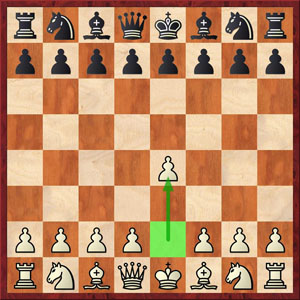
Before the rule of white moving first, each color had an equal chance at the first move. In the late 1800s, the rule changed from which color had the right to move first to which player would get white and the first move.
In the midst of the protests worldwide, many are discussing various questions of how racism is present on many levels of society… police brutality, unequal justice, immigration and religious intolerance. One of the most intriguing questions of late pertains to the chess rule of white moving first. Is chess racist? With the introduction of this convention in the mid-1800s, was there some type of insidious plot to reinforce white’s superiority and black’s inferiority?Most likely it was a mixture of reasons, but whether there a reason to revisit the practice is the question being raised.
History in Black and White
The export of modern-day chess goes back to the 15th century. King Ferdinand of Aragon and Queen Isabella (Isabel da Católica) of Castile funded the voyages of the Spanish explorers, such as Cristoforo Colombo (Christopher Columbus), to seek treasurers and discover the “New World.”
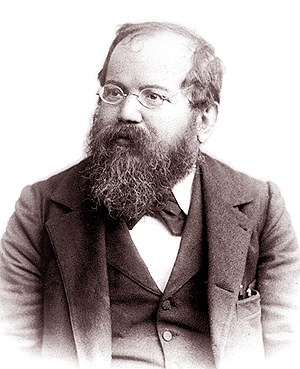
Wilhelm Steinitz
Chess would be one of Spain’s exports and it would touch the distant shores of Asia, Africa, the Americas and the West Indies. Despite European chess being relatively new, chess sets became highly-sought after in the realm of international trade. Chess sets were handcrafted from various materials and of different color tones making them complete works of art. Some were more suited for display than for playing.
One can say that during its evolution, chess was considered a game of the elite. It was a game of the “civilized” and was touted as a pastime of the well-heeled intelligentsia. This is indicated in the report of the Sixth American Chess Congress in New York in 1889, edited by then-World Champion Wilhelm Steinitz.
For centuries the games of Chess has stood preeminent among the intellectual pastimes of civilized nations. It has been cultivated and extolled by the wise and great of all ages, and notably in recent times by such exponents of modern progress as Leibnitz, Voltaire, Franklin, Diderot, Lessing, Boethe, Buckle, etc., as affording an admirable training for the highest faculties of the human mind.
It is well-known that Africans had their own levels of erudition as fair as science, medicine and the arts. If we draw on history, we remember the University of Timbuktu, and the civilization of ancient Egypt. We also remember the Moors taking science, architecture, medicine and cultural pastimes such as shatranj into Spain. Shatranj blindfold exhibitions and tournaments were commonplace.
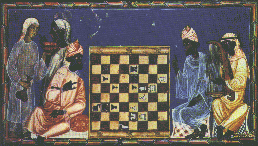
Moors of Spain playing a casual game of Shatranj
Castile, 1283 AD
In contrast to the current version of chess, shatranj did not originally have colored squares. Also, a coin was tossed to see who moved first. When the Spanish drove the Moors out of the Iberian peninsula in 1492, shatranj was “Europeanized,” and the black/white chess dichotomy took on a greater symbolism.
Proposals & Rule Change
At the First American Chess Congress in 1857, England’s Johann Lowenthal recommended that white have the obligatory first move. The book commemorating the congress, sets the tone:
Mr. Perrin, the Secretary of the New York Club, informed the Congress that he had received two communications from Mr. Lowenthal, of London; the first relating to the advisableness of always giving the first move, in published games, to the player of the white pieces, and the second containing an new analysis of the Pawn and Move opening. Both of these he was requested by their distinguished author to present to the Congress. A vote of thanks was given to Mr. Lowenthal for his valuable communications.
This was a proposal, but there was no accompanying explanation of this rationale and why it would be white as opposed to black moving first. This rule was not immediately adopted and tournament organizers maintained flexibility on the first move. However, in the Fifth American Congress in 1880, the rules read (page 126), “The one having the move, in every case, is to play the white pieces.”
In the same document, it was written under “Code of Chess Laws” (page 164), “The right of first move must be determined by lot. The player must always play with the white men.” Apparently, a consensus was being formed as some tournaments had already made it part of their rules. Perhaps the most definitive statement made appeared on page xii in a book titled, The Modern Chess Instructor (1889) where Steinitz (the sitting World Champion) stated,
“The players draw by lot for move and choice of color. In all international and public Chess matches and tournaments, however, it is the rule for the first player to have the white men.”
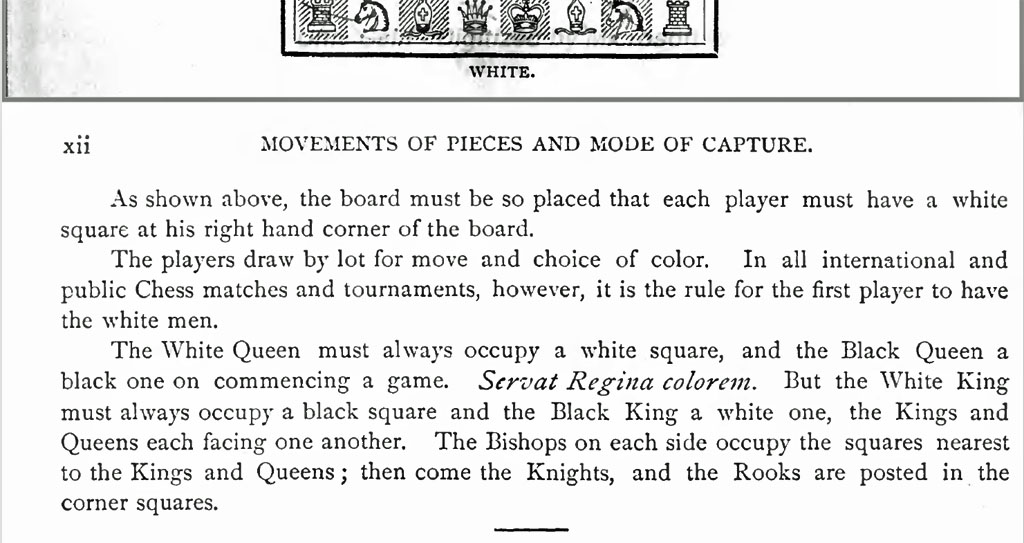
The Color Confrontation
While I could not find any references to using the social hierarchy of race as a rationale for the move order, we should notice the language of Steinitz. His emphasis on the word “civilized” and “modern progress” in his writings was mostly used when referring to the western world. Such thoughts were commonplace and is still the worldview of many.
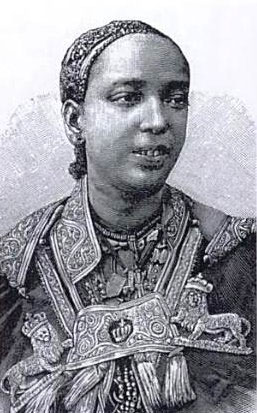
Taytu Betul
Empress of Ethiopia
In this worldview, there were two major events that shaped the relationship between Europeans and Africans. Besides the Trans-Atlantic Slave Trade, the Berlin Conference of 1884-85 laid the economic foundation for the industrialized world. At the conference, 14 nations (13 European nations and the United States) met in Germany to discuss the partition of the vast African continent. The subsequent colonization was justified as a “civilizing mission,” but destroyed local traditions and customs, divided ethnic groups, and forced adversaries in closer proximity. The effects were devastating.
Before colonialization, chess had already visited Africa, including entry on the east coast of Zanzibar. There were also other entry points. Dr. Ned Munger wrote a series of books on chess set collections, called Cultures, Chess, Art.
In Munger’s volume on Sub-Saharan Africa, he mentions British chess historian H.J.R. Murray who told the story of fellow Britisher Henry Salt. Salt traveled to Ethiopia 1802-1806 and stated that while Ethiopian commoners gave advice during games, the “ras” or king always won. Salt was able to bring back to England the Wellad Selasse chess set. Emperor Haile Selassie mentioned to a British scholar that under the reign of Menelik (1844-1923), Empress Tatyu was devoted to an Ethiopian version of chess, “senterej.”
As mentioned earlier, Europe had met at the Berlin Conference to divide the spoils of the “Black Continent” in what is historically called “The Scramble for Africa.” While the scramble had begun decades before, this initiated the system of colonialism where Africans were seen as inferior subjects under the governance of Europeans. Incidentally, chess-playing Ethiopia was the only African nation never submitting to colonial authority.
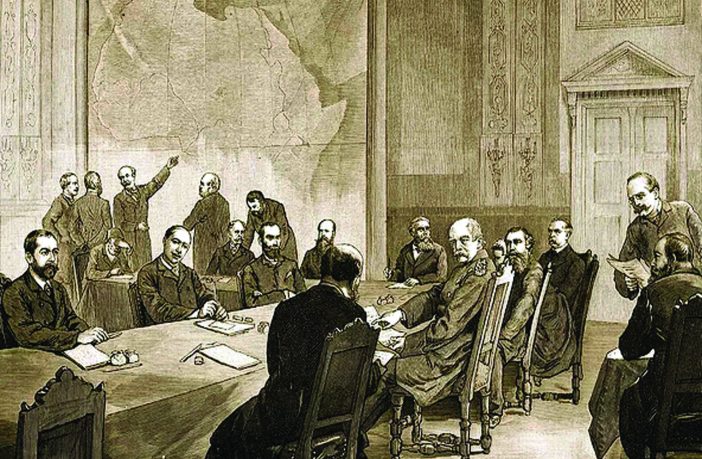
The Berlin Conference of 1884-1885
The conference reinforced the notion that western nations were the standard of “civility” to which other countries would aspire. The colonization of Africa cast the view that Europe and Africa were diametrically opposed in terms of intellect, culture, and social mores. This notion was inferred on many levels, including the way African religions and societal customs were attacked and denigrated.
Chess enthusiasts were well aware that western culture did not depict Africans as among the “civilized,” and denigration of the inhabitants perhaps had an influence. There may have been another influence due to ideas of the color spectrum. A fascinating 2006 study using the Implicit Association Test (IAT) may shed light on this issue. In the study, “Black and White: The Role of Color Bias in Implicit Race Bias,” an excerpt from the abstract reads,
Scholars in many domains have also documented that people generally have more positive associations with the color white and more negative associations with the color black. The present research, consisting of three studies, examined the potential contribution of general implicit evaluative associations with the colors white and black to implicit race preferences as measured by the IAT.
Drawing on multiple studies, and confirmed by popular culture, we see examples of positive associations with “white” and negative associations with “black.” In fact, the move-rule is that the lighter color would always move first. This is also affirmed by Dr. John E. Williams, who examined the relation between color preferences and racial biases in a series of studies in the 1960s.
There is no definitive conclusion on whether white was awarded the first-move as a sense of racial privilege, but there was a definitive decision made to choose white over black. Given the 19th century era, there was a prevailing notion that white may have been the preferred color, literally and figuratively.
Is the First Move an Advantage?
Even if we agree that there were social influences in awarding white the first move, does it yield an inherent advantage? My views are more consistent with GM Andras Adorjan who asserts that such advantages are more psychological. For example, many of the early romantic opening books focused on crude attacking systems for white. The puzzle books tended to be exclusively “white to play.”
.jpg)
It is ironic that Black chess problemist Theophilus Thompson (1855-1881) had already made his mark by the time this move rule was established. In fact, he produced a problem book in 1873 where all of the problems were “white to play and mate.” We have been conditioned to believe that white should prove the initiative. Such conventions were commonly presented in chess literature.
Does white have the initiative after the first move? If so, we would be playing an unfair contest. We know that chess is an unfolding theater play and the first move is simply the opening line uttered on the stage. What matters is the sequence that follows, the ebb and flow of the game with its meandering plots, its skirmishes and long-range play. Tempos are won, lost and traded.
The duality makes chess is an equal game. In fact, the person moving first does not necessarily have the advantage unless you want to discount thousands of years of martial arts and science. Attempting the first blow or punch does not always constitute an advantage. It depends on the resources the second player has.
Video by XS Sports
In this video, 10th-degree black belt Anthony Muhammad had adequate measures despite his “uke” having the first move in every situation. In chess, a difference in the Elo rating would negate any first move advantage. Why? Because the second player has equal or better countermeasures. In the endgame, a “tempo” can decide the game by the smallest of margins. However, after white’s first move, there is a growing body of literature where black fights on equal terms, and even for the initiative.
We remember Evgeny Sveshnikov saying in 1994, “win with white” and “draw with black.” Why saddle yourself with a psychological disadvantage from the outset? Bobby Fischer never had such thoughts and played to win with both colors. What is the objective of playing a game of chess? Is it to draw? No, it’s to win regardless of the color. Otherwise, it’s a handicap game. It seems ironic that a Sicilian variation bearing Sveshnikov’s name is one of the most dynamic and complicated systems used to play for a win with black.
Black is OK!
Years ago, I wrote an article titled, “The Socio-Politics of the First Move in Chess.” In it I state,
We often hear that a player must win with white and be happy to draw with black. Is this based on the sample of games that have been played thus far? Is this a concrete truism or a mere perception shaped by how the game has been presented to the chess-playing public? Saying that white has the advantage is easy, but can we truly deduce that it is due to the first move?
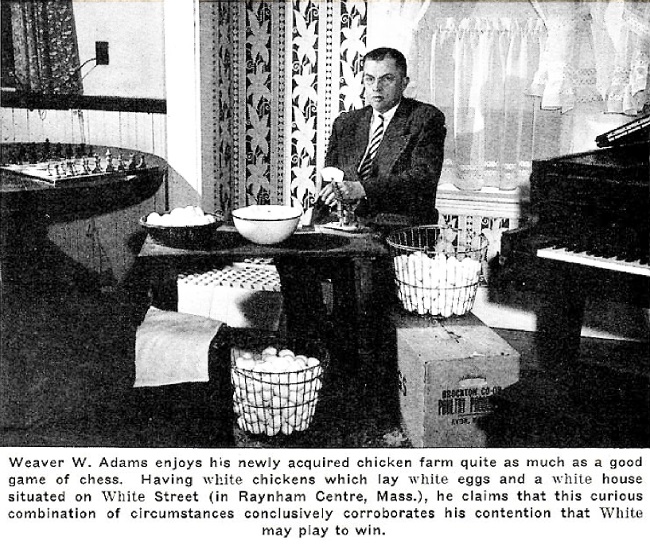
In other words can we deduce that a player won a chess game because they played 1.e4, 1.d4, 1.c4, or 1.Nf3? Weaver Adams tried to claim white was winning after 1.e4, but lost a match to I.A. Horowitz who insisted on playing black every game. Adams was also ridiculed in a 1962 Chess Life magazine by then-U.S. Champion, Larry Evans for “demonstrating forced wins against second-rate defenses.”
The crude taste for brilliancies and admiration for the spectacular is juvenile hero-worship. To those of you who lament the passing of Morphy and the so-called “golden age” of chess, I can only say – grow up! Don’t retreat from reality with elaborate systems that work only on paper.
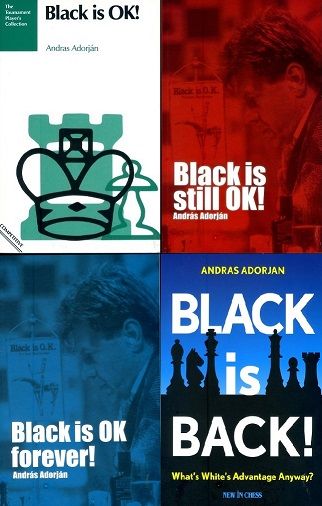
While Evans punched holes in Adams’ crude analysis, statistics show that white holds a sizable edge of 52-55% win rate over black. What explains this? Objectively, more effort has been invested to show that white has the advantage. It is the same spirit in which Adams pronounced white to be winning after 1.e4. It makes sense that chess players are more motivated to prove an advantage. There is another psychological angle.
If we look at the books (even today), almost all are presented from white’s perspective. This is even true for books focusing on black openings. This practice has gone unchallenged until recently. In Emory Tate’s biography Triple Exclam, the book is written from his perspective, black or white. GM Andras Adorjan has take steps in undoing this bias with his series of books on black resources. In his books, all diagrams are from black’s perspective. In his Black is Back! he even cites the aforementioned article from The Chess Drum,
Many boil the first move advantage down to notions such as tempos and white’s aforementioned percentage of victory. However, chess games are not linear and do not follow a uniform pace throughout the game. There are many tempos lost and gained by both sides in the course of a game. The pace ebbs and flows; the advantage swings back and forth. … As the game changes its character, the importance of the first move may have long lost much its relevance to the position. In fact, black has as much right to determine the character of the game.
Chess has the same rules for both, and thus the objective is the same for both. Black should be no more willing to make a half-point its ceiling than white. As we discover more systems and resources for black, we will soon find the win gap narrowing. Chess becomes more equalized as the gap between the skill of players closes. It was also Steinitz who stated in Modern Chess Instructor (page xxxii) that “by best play on both sides, a draw ought to be the legitimate result.”
The Final Verdict: Guilty or Not Guilty?
Not guilty.
Chess is fair and balanced, like many of the laws of the universe. It has two opposing forces that can work to neutralize one another. As we have stated, social influences have become part of the game since the Spanish made radical changes in the rules in the 15th century. While the Spanish had palpable hostility toward the Moors, they appreciated the game of shatranj and decided to make it in their own image. Most notable was the inclusion of the queen in honor of Queen Isabella.
Africans indeed were involved in games and many were adept at strategy games like shatranj, warri, kharabaga, and draughts (10×10 checkers). Today Africans boast some of the strongest draughts players in the world. Unfortunately, Africans had lost their connection with the glorious history of shatranj, but in this year of 2020, their descendants continue to appreciate the equal opportunity of chess.

One could look at the humanoid pieces as symbolic of a racial battle between black and white forces. Again, if you change the color of the pieces to green and orange, would we have the same question? It’s doubtful, but let’s be clear. In chess, the color of the pieces is less relevant than the essence of the battle. In the current world of George Floyd protests, color (ethnicity) seems to be the essence of the battle. Chess is not the same as social justice because when we fight against racism, it is not a game.

When Lowenthal made the “white first” proposal in 1857, it is interesting that it was the same year of the Dred Scott decision.
March 6, 1857 | Supreme Court Issues Dred Scott Decision
http://learning.blogs.nytimes.com/2012/03/06/march-6-1857-supreme-court-issues-dred-scott-decision/
Nice article Daaim, fisher said ,”e4 best by test” so i simply refuted his idea with 1e5., pretty simple actually. Aida on August 24th & 25th i showed up at the St.Louis Chess Club and Scholastic Center on a visit and signed their book ,Anand, Magnus Naka, (sup Sunil!l i see the kid has gotten pretty good since they NY State Championship back in the early 90s! haha.) and the traditional gms were there practicing with each other, rd8 Sinquefeld Cup.I heard gm A.Ramirez talkin crazy to Mauice about Kasparov’s playin strength online so i left the playin hall and went over to the analysis room and busted all his analysis, so Daaim when u see this dude, tell him that wuz me the in the blacksuit in the back of the room “givin him that work” Their top dude is only 2863 and the top women is a mere 2658 on their scale. Why the difference? Drummas if ya get a chance call your Federation and see if they have an answer and come tell us, UM calling the U.S.C.F. right now to see what they know, i well let yall know what they said. BUBBAFISHA.
This is a very interesting and informative article Daaim. I didn’t know most of this and I’m willing to bet at least 95% of chess players don’t know this fundamental history of their game, let alone the general population,
The world is starting to realize and analyze in more depth, how the paradigm of colonization, Eurocentrism, and white supremacy has been ingrained into almost every aspect of our lives in the Western Hemisphere (and most of the world). This article is an important contribution to this analysis in my opinion. I hope it reaches a wider readership – not just among chess players, but among the general population.
I used to tell (some of) my students, that chess is like life in many ways:
1) The King is only King when the Woman isn’t around. Otherwise he generally hides behind his pawns/soldiers and tries to stay out of conflicts
2) The King is not the best on the battlefield, or the strongest or the quickest. Only when it’s him remaining with his pawns (common foot soldiers), that he becomes ‘The Man’
And lets not forget 3) White Moves First and 4) White is always Right! 🙂
Indeed.
The larger point is that in the 1800s, there was already a racist climate created by societal norms that put white as the top and black on the bottom. Whether or not Lowenthal and Steinitz realized this had racial implications is another issue. I could not find any discussion on this. Certainly the Spanish changes to the game had a more racial undertone with the Catholic figurines ousting the Moor (literally meaning “black”). The notion was reinforced through slavery and colonialism and chess players in the 1800s may have subconsciously chose white over black due to social conditioning. The 2006 study cited in the article gave some interesting analysis.
“At the First American Chess Congress in 1857, England’s Johann Lowenthal recommended that white have the obligatory first move”
Some other interesting history regarding this:
1) The First American Chess Congress tournament of 1857 was won in dominating fashion by a 20 year old Paul Morphy (who incidentally was part Creole/Caribbean on his mother’s side)
Morphy defeated the other US chess superstar of that era, Louis Paulsen, by a 5-1 score in the finals:
http://graeme.50webs.com/chesschamps/us/1857.htm
The year after, 1858, Morphy would make his historic tour (conquest) of Europe, defeating all the top European masters of the day – including Lowenthal by a 10-4 score
Morphy first played Lowenthal in 1850 when he was twelve years old. If we were writing historical fiction, perhaps we could speculate that this bitter memory of Lowenthal’s may have contributed to his ‘White Moves First’ decision?
It must have been a jarring experience for a top European master, to get schooled by that dark curly haired boy. If it was anything like some chess experiences I had as a kid, I would also speculate Lowenthal’s face turned red 😉
(From Paul Morphy’s wikipedia page):
“In 1850, when Morphy was twelve, the strong professional Hungarian chess master Johann Löwenthal visited New Orleans. Löwenthal, who had often played and defeated talented youngsters, considered the informal match a waste of time but accepted the offer as a courtesy to the well-to-do judge.
By about the twelfth move in the first game, Löwenthal realized he was up against someone formidable. Each time Morphy made a good move, Löwenthal’s eyebrows shot up in a manner described by Ernest Morphy as “comique”. Löwenthal played three games with Paul Morphy during his New Orleans stay, scoring two losses and one draw (or, according to another source, losing all three).[13]”
This is a wonderful review of the history of the first move within the current sociopolitical climate! Thank you!
I also read somewhere that black was considered among many in the middle ages to be a lucky color. Do you think this could’ve contributed to white being given the first move?
That is indeed true in the Middle Ages when things were a bit reversed. In fact, in the previous versions of chess (shatranj), lots were drawn to see who would move first. The color question had not evolved yet. Of course the pieces were not really black, nor white. These issues became a lot more prevalent after the defeat of the Moors in 1492. It was then that the Spanish and Portuguese started their quest for colonization and the slave trade followed. There was tremendous hostility against the Blackamoors or “Moors” and some of these ideas represented victory over the vanquished enemy.
It’s hard to say given that this rule change occurred in the 1880s. I believe they were men of their times and already the color white had taken on a specific status. At that time, black was already a symbol of that which was evil, unbecoming or negative. It became the antithesis of white. It is still uncertain WHY they awarded white the first move. White advantages can be felt also in the way chess is presented in literature. Nevertheless, chess is still a fair game and black has an opportunity to show ways toward victory.
Yes… that was interesting history. I remember James McCune Smith describing “ethnic features” of Paul Morphy in his famous essay. There has been some discussion on this, but what I have found is that both of Morphy’s parents (Alonzo Morphy and Louise Thérèse Félicité Thelcide Le Carpentier) were of European ancestry although the Carpentier family had ties in the French Caribbean (Hispaniola). Morphy was 100% European ancestry as far as I can tell.
Morphy’s story should be studied. That was a pivotal time in chess and was the preview to scientific study of the game.
What you said about white’s advantage being mostly psychological, and comparing it to martial arts, also has a lot of truth. Because chess is MMA (Mental Martial Art).
I studied aikido for a number of years, and aikidoka never strike first. The fundamental principle of aikido (AI = harmony; KI = energy; DO = the way) is that the attacker is always off balance. The aikidoka is trained to exploit the opening created by the attacker, and manipulate/redirect his energy.
GM Maurice Ashley (also an aikidoka) applied these principles to chess in ‘Aikido Chess’. Aikido, based somewhat on Jiu Jitsu, has many of the same techniques demonstrated by GM Muhammad in the video.
I’ve noticed that black seems to be doing a lot better in elite chess these days. The last world championship match Carlsen vs Caruana, black was better almost every game if you recall. And in a lot of these elite rapid streaming tournaments going on lately (Magnus Carlsen Invitational, etc.), black seemed to be winning at least as many games as white, if not more on some days.
If we think of chess as aikido, and redirecting the attacker’s energy, perhaps it can be said that black has the advantage over white because he gets to ‘react’?
There were some elite players like Korchnoi who actually had a better record with the black pieces than with white at certain points (not sure if that was true for his entire career)
Yeah nice post Daaim , drummas read chessbooks they got alotta of them at the library, do the research and the real work that way you wont just be Regurgitating old history and talkin about morphy and kungfu with david carridine, actually do the work so u can create new ideas in chess.This is why i get into Ultramodern Chess instead of just traditionalism. BUBBAFISHA.
BE CREATIVE IN YOUR WORK!!! BUBBAFISHA/ULTRAMODERNIST https://lichess.org/study/rwTR8hCU
Miro,
Finally someone who understands.
Too much emphasis is placed on “the white pieces” and I bristle every time I hear a commentator or player talk about it so much.
Yes sir. Aikido and many other martial arts are defensive. I believe black has more than enough resources, but we’ve been conditioned for a century to believe white is preferred. The point I made about all the books being from the white perspective cannot be overstated. I don’t find it explicitly racist, but there is a social conditioning that we are always looking from one perspective. It is an implicit message. Even when we are studying a book on the Sicilian, Benko Gambit, or Caro Kann, we are looking from the white perspective. Why should we study a black system from the white side of the board??
In the age of computers, defending has gotten a lot better and I believe in the next decades we will see black get closer to 47-48%. As more resources are studied for black it will be the equal game that we all believe chess to be (with best play).
Lionel,
Books are still good. People today rifle through information on the computer and are not concerned about the context. For them, if the engine says it’s good, then they move on. That is a glaring difference in today’s generation. Saying that, they are absorbing more information and the ratings are higher than in the past.
Oh one more thing, if computers are so great then why on chess.com did Nakamura get crushed by Komodo while it wuz give him all kinds of extra moves and ridiculous odds? how did that help his game? HE didnt win one game whats that about? UM JUST ASKIN? BUBBAFISHA
Dr. Shabazz: great post, great website. So inspiring. Thank you for all your work.
I’ve been reading some of Wilhelm Steinitz’s non-chess writings, some of them collected in “The Steinitz Papers”, where his ideas on society and race are laid out quite clearly. His beliefs are extremely racist, but as you know, also extremely commonplace for the 1880s and 1890s, the age of “scientific racism.”
No coincidence that the “white moves first” rule suddenly became unanimous right around the height of European imperialist advances (1884-85 Berlin conference and the carving of Africa), white supremacist movements (KKK, Jim Crow) and pseudo-scientific justifications for white supremacy (social darwinism, eugenics, etc).
It’s about time that children around the world can learn to play this amazing game without being forced to also internalize white supremacist logic.
-Kavin
#blackplaysfirst
I’ll have to look up the Steinitz Papers. Is there a link I could look at?
A number of libraries across the US have the book, but I’m in India now and can’t visit any of them. Here’s the list of libraries: https://www.worldcat.org/title/steinitz-papers-letters-and-documents-of-the-first-world-chess-champion/oclc/751703006&referer=brief_results
In the meantime, though, I’ve been able to piece together a lot of interesting stuff from the google books site. I mean it’s not exactly surprising…. But his writings just ooze white supremacy. Check it out: https://books.google.co.in/books?id=NltT4BinugsC&source=gbs_navlinks_s
I purchased the book. Thanks Kavin!
Kavin,
Can you refer me to some of your observations by page number?
Daaim
The Evolution Of Modern Chess Rules: White Moves First!
By John McCrary | May 11, 2021 |
https://new.uschess.org/news/evolution-modern-chess-rules-white-moves-first
1E5 is on the bored! ULTRAMODERNIST
This was a very informative and enlightening article. Thank you for sharing.